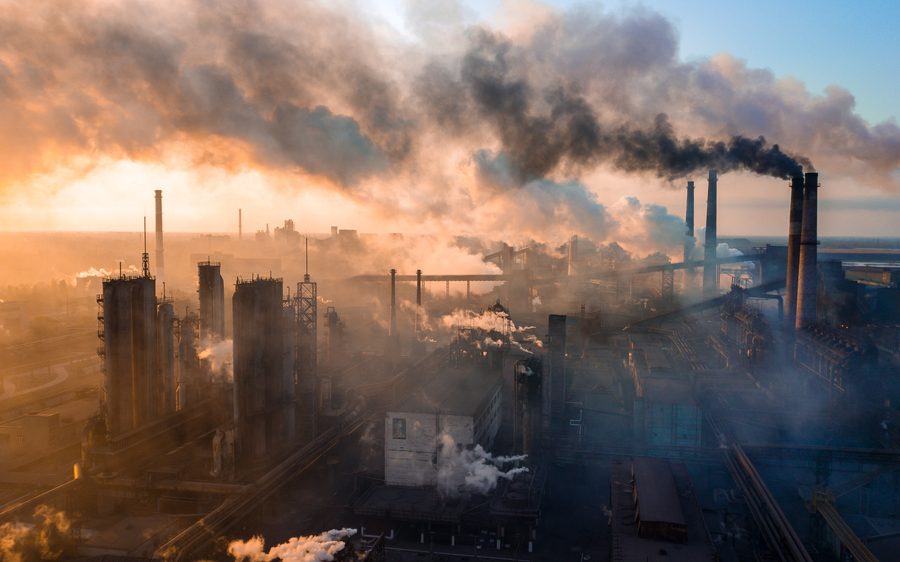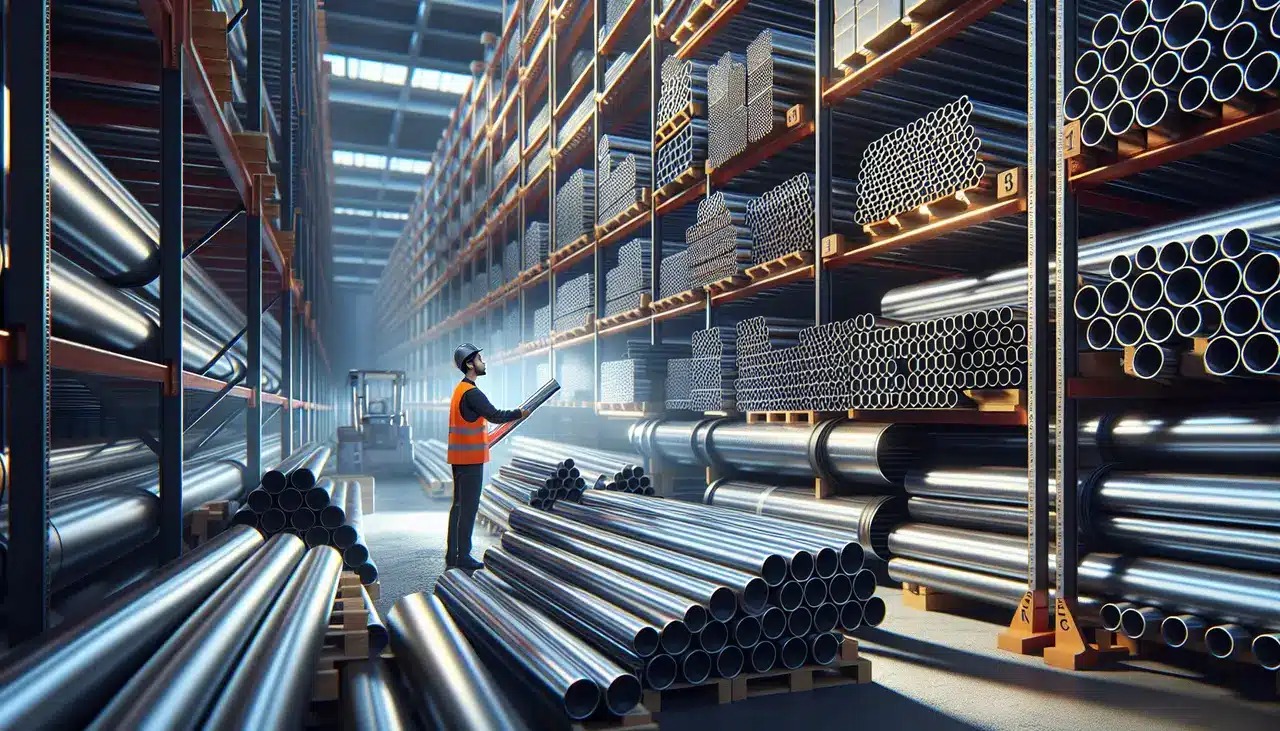Wednesday, 31/12/2025 | 21:22 GMT+7
Industry is the second largest source of CO2 emissions, and three heavy industries – chemicals, steel and cement – account for nearly 60% of industrial energy consumption and around 70% of CO2 emissions. (IEA, 2021) The European Union is responsible for 9% of global industrial energy demand, and energy efficiency is one of the tools the EU uses to meet climate targets. (European Commission, 2020)
Efficient appliances and equipment as well as efficient constructions of facilities play a crucial role in achieving net zero emissions by 2050. (IEA, 2021) Energy-efficient technologies are usually mature, thus readily available and cost-effective. They can decrease production costs and enhance the comparative advantage of the firms. (Rosen & Guenther, 2015) Is it therefore possible to claim that energy efficiency is a sufficient tool in decarbonizing European heavy industries, especially the steel industry?

Iron and steel have become more and more widely used in everyday life over the past decades, and global steel production has more than tripled since 1970. (World Economic Forum, 2021)
Hand in hand with the production boom goes its emission intensity – the steel industry is responsible for around 5% of CO2 emissions in the EU and 7% globally. (Joint Research Centre, 2022) Steel demand is globally expected to grow in 2060 by 30% compared to 2017. (IEA, 2019)
It is used not only as a construction material for buildings or vehicles, planes, and ships, but its potential in decarbonization is much larger. Renewable energy generation heavily relies on iron and steel. For instance, wind turbines are predominantly made of steel (66-79% depending on the type of the turbine). (USGS, 2022) This being said, the steel industry is also a green market opportunity and can create a whole industrial ecosystem around decarbonization.
Steel can be produced in two ways: 1) using iron ore (as its main source of metallic input), or 2) using steel scrap. Around 85% of the emissions reduction coming from steel production by 2030 can be ensured by current technologies, according to the Net Zero Emissions by 2050 Scenario. In theory, major improvement in steel decarbonization can be achieved by recycling and reusing scrap metal in electric arc furnaces, but the availability of scrap is not sufficient, especially in Europe. On top of that, steel prices are rocketing (by 60% from 2019 to 2021), and supply constraints have been observed in the steel sector. (IEA, 2021) That is why energy efficiency is a suitable instrument to reduce carbon intensity of this heavy industry.
The EU can face such constraints by introducing efficient industrial policies. In green steel, the EU member states are already particularly active in the development of early-stage technologies and their deployment. A good example is the Hybrit project in Sweden, which successfully deployed the world’s first fossil-free steel on the market. (Hybrit, 2021) Hence, the focus of the EU should be turned to R&D and pilot/demonstration projects, which can constitute a comparative advantage even if the absolute advantage will remain in greater economies such as the US or China.
Studies suggest that in the EU, energy efficiency improvements alone can decrease the industrial energy demand by 13.5% in 2050. The steel industry is one of the industries with the most potential – 360 PJ could be saved in the iron and steel industry only by adopting energy-efficient technologies. However, energy efficiency measures alone cannot reach the saving estimated by PRIMES, they must be complemented by high recycling levels, increased material efficiency and wide adoption of innovative measures. (Kermeli et al., 2022)
Cost-effectiveness of energy efficiency improvements in the European iron and steel industries has been analyzed by Moya and Pardo (2013), who found that the margin of improvement in CO2 emissions is relatively high in short payback periods (ca 20%) and even higher in longer payback periods (50-65%). (Moya & Pardo, 2013) In line with the previous findings of the crucial role of innovative technologies, R&D can contribute to increasing the margin of improvement and closing the efficiency gap.

Following the argument of comparative advantage, energy efficiency can also be seen as an opportunity to reduce operational costs.
McKinsey (2010) found that typical savings among steel players in Europe and the US can be 10-15%, and they can be achieved with only limited investment and simple payback periods of less than two years. Companies have taken a variety of steps to lower their energy intensity, but a holistic approach is still missing. (McKinsey, 2010) For firms, energy efficiency is thus an opportunity to increase profits and/or lower costs.
Economic profits are nonetheless only one of the multiple positive contributions of energy efficiency. To enhance competitiveness of heavy industries in the EU, disruption of global supply chains must be avoided. Efficiency measures could lower the dependence of production on external sources. Existing efficiency options are nonetheless limited and European industries are already approaching the limits of maximum efficiency. Developing alternative clean technologies is costly, resulting in backlash of numerous facilities and lack of necessary investment. Steel industry is, nevertheless, a sector with high innovation potential, the EU could therefore – by providing further support for innovation in steel decarbonization and energy efficiency – positively incentivize private investment.
This paper argues that current energy efficiency efforts are a significant, yet not a sufficient tool in decarbonization of European heavy industries and specifically steel industry. Energy efficiency measures on the European level can be further complemented by predictable industrial policies that would decrease uncertainty of the industries as well as by creation of an industrial ecosystem (given the high innovation potential of steel and its use in the renewable energy generation supply chain). Adequate policies could also shorten the time required to deploy technologies under R&D and reduce the uncertainties about their potential to reduce energy consumption and CO2 emissions in a cost-effective way. (Moya & Pardo, 2013) Therefore, this paper provides several policy recommendations for the European heavy industries.
Energy efficiency must be monitored and its indicators unified. For instance, energy consumption statistics for the iron and steel sector in Sweden diverge considerably when looking at various sources, such as the UN, Eurostat, Odysee or IEA. (Morfeldt & Silveira, 2014) An improved common understanding of energy efficiency indicators would contribute to closing the knowledge gap in heavy industry decarbonization. The same recommendation applies to regulatory standards, because a predictable regulatory framework reduces uncertainty and also enhances the potential of European industry as a trendsetter (following the introduction of GDPR, several countries adopted similar measures, and energy efficiency regulation could constitute a similar window of opportunity).
Market failures in steel industry could be tackled by introducing further financial instruments such as subsidies. Subsidies are efficient in supporting innovation in clean technologies, they counter the negative externalities arising from pollution and intensive energy consumption. They can contribute to building critical infrastructure required for a time-intensive steel decarbonization. However, heavy subsidizing of steel production – even decarbonized – can lead to global excess capacity and generate market and trade distortions, resulting in trade disputes. If steel subsidies are not well-designed, they could discourage the exit of inefficient firms from the market or lead to higher levels of investment and capacity expansion that do not seem justified by current or future market demand. (GFSEC, 2021)
Subsidies can be useful if they focus on R&D and are complemented with R&D tax credits, rather than simple targeted grants and subsidies. (Criscuolo et al., 2022) There are nevertheless other policy instruments that can positively incentivize private investment in energy efficiency in steel industry, such as guarantees and other transfers of liabilities, equity infusions, preferential loans or lower than market price fixing.
Heavy industries, despite their emissions intensity, contribute to the economic growth of the EU member states. Energy efficiency can significantly help to decarbonize them, if supported and complemented by further policies, especially positive incentives for research & development of clean technologies. In the steel industry with high innovation potential, innovative energy efficiency measures constitute a market opportunity and also a prevention of major supply chains constraints. Energy efficiency plays therefore an important role in both environmental and economic dimension of decarbonization of heavy industries, even if it cannot achieve net zero goals alone.
According to sciencespo.fr








 Webinar 2: “Financial Support for Energy Efficiency Enterprises – Opportunities and Challenges”
Webinar 2: “Financial Support for Energy Efficiency Enterprises – Opportunities and Challenges”
 Vietnamese enterprises achieve green growth and cut costs through energy efficiency
Vietnamese enterprises achieve green growth and cut costs through energy efficiency
 Capacity Building for Program Implementing Entity
Capacity Building for Program Implementing Entity
 Enhance Energy Efficiency Knowledge for Managers of Cement Industrial Enterprises
Enhance Energy Efficiency Knowledge for Managers of Cement Industrial Enterprises
 Capacity building for participating financial institutions in Ho Chi Minh City
Capacity building for participating financial institutions in Ho Chi Minh City
 Strengthening capacity for energy management officers of local government agencies
Strengthening capacity for energy management officers of local government agencies
 Strengthening Sales and Marketing Capacity for Energy Efficiency Equipment and Solution Suppliers
Strengthening Sales and Marketing Capacity for Energy Efficiency Equipment and Solution Suppliers